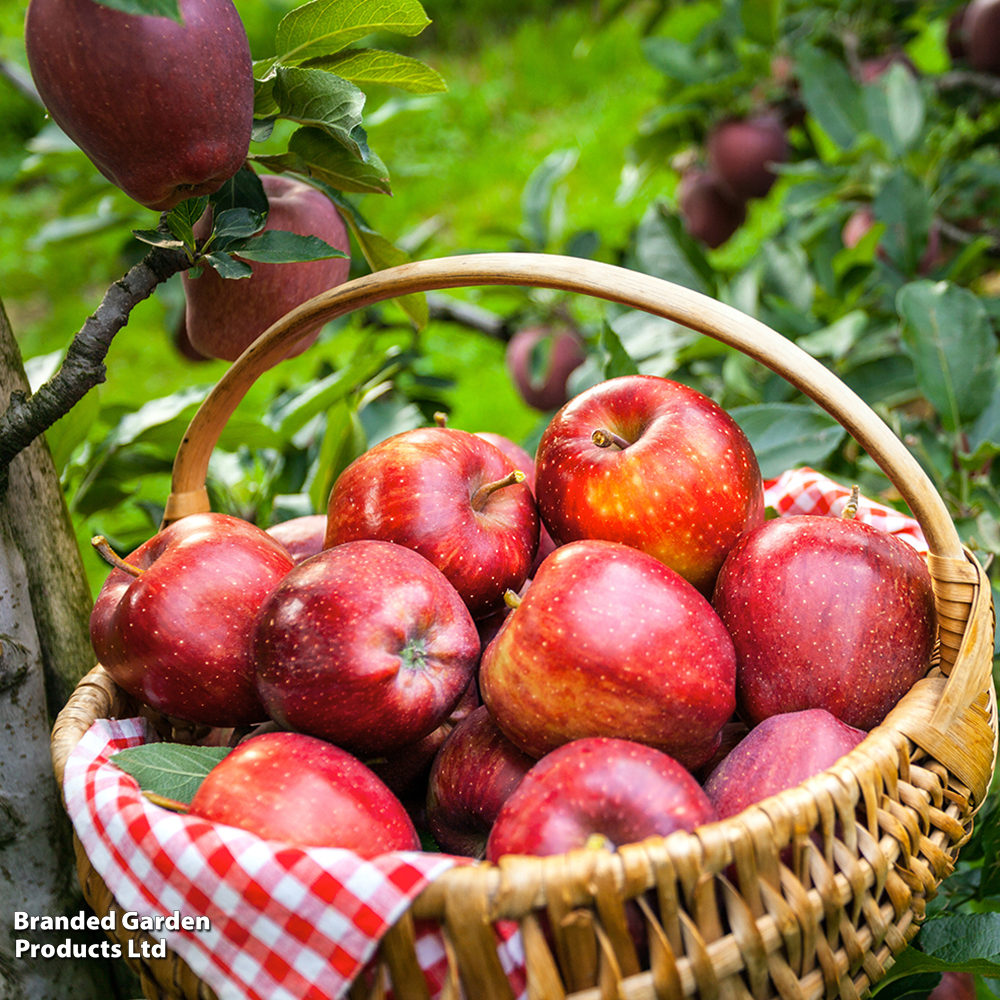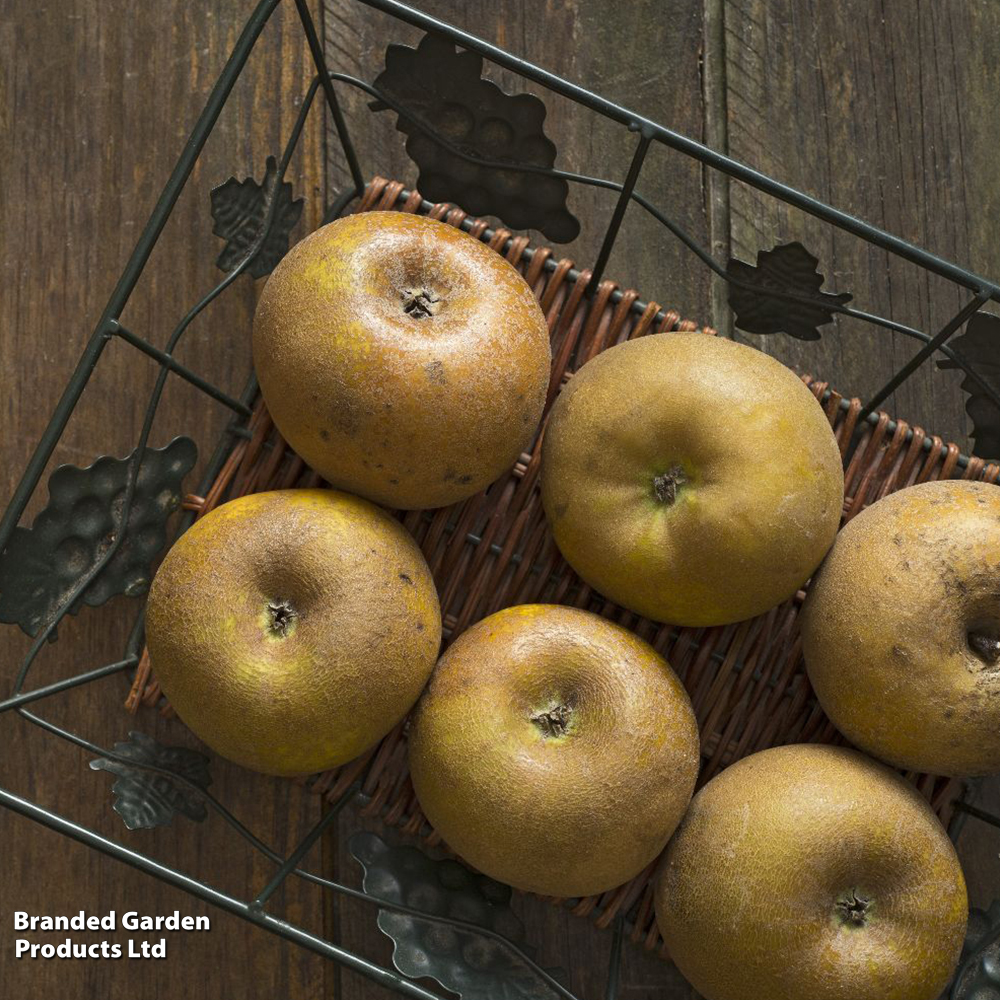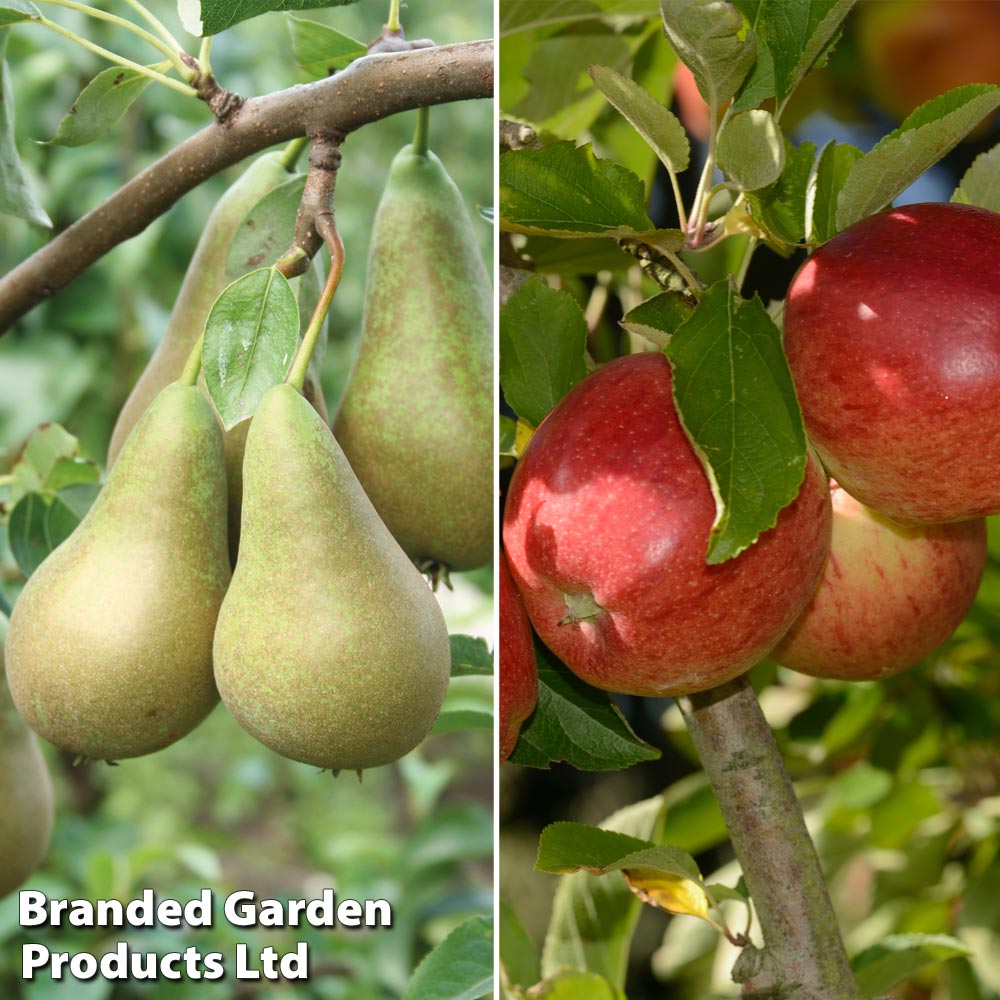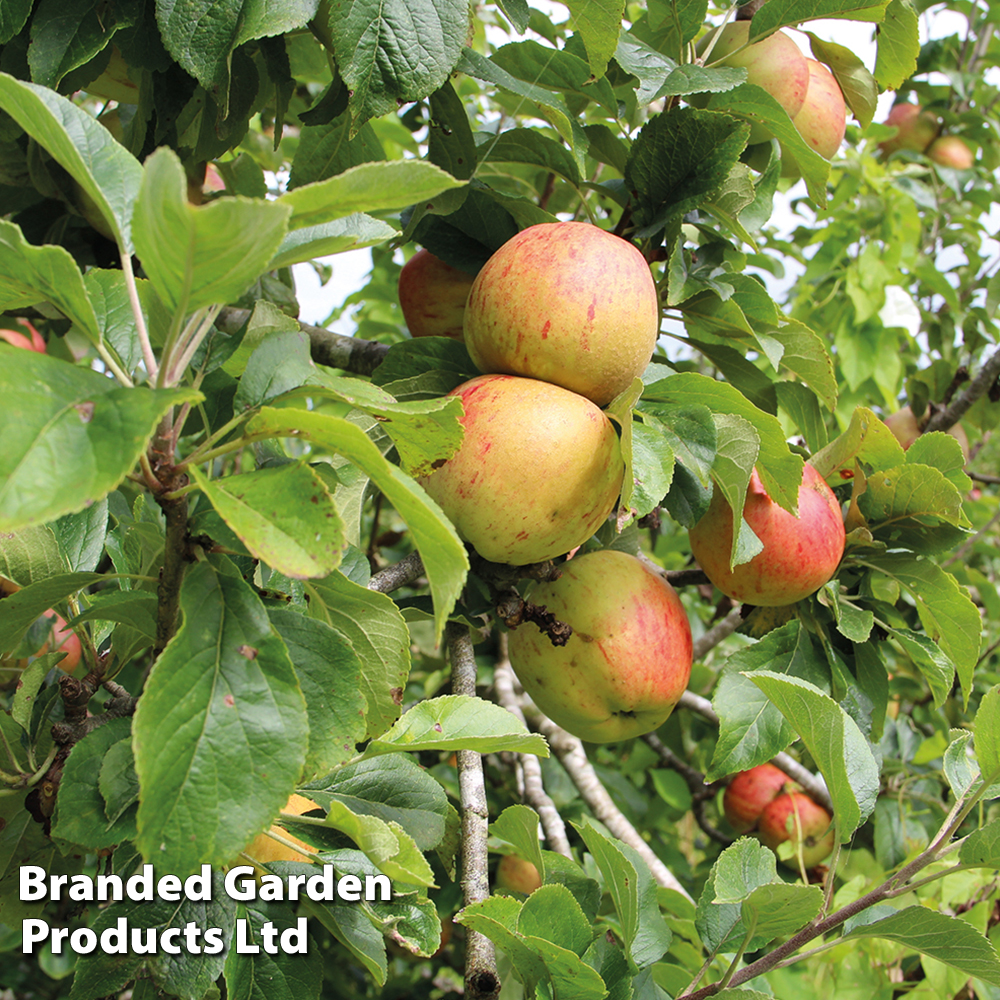‘Lord Lambourne’ has been around for well over 100 yards, introduced in 1907, still one of the most popular varieties of apple to grow in the garden due to it’s reliability and sweet, aromatic flavoured fruits. Holder of an RHS AGM, varieties just can’t knock this old classic off it’s perch, with it’s orange-green skin laced with red with crisp and juicy flesh. Pick this dessert apple from mid-September and store right up until November. Apple rootstocks: M27 – Extreme dwarf reaching a mature height of up to 1.5m (5′). M9/ Pajam 9/ P9 – Dwarf reaching a mature height of up to 2.5m (8′). M26 – Dwarf reaching a mature height of 2.5-3m (8-10′). M6 – Semi dwarf reaching a mature height of up to 3m (10′). MM106 – Semi dwarf reaching a mature height of up to 4m (13′). This variety is partially self-fertile. For the heaviest crops it is best grown with another variety. If you only have room for one tree then make sure that a neighbour has a tree close by that can act as a suitable pollinator. Pollination Group 2 – Eating Apple. Estimated time to cropping once planted: 2 years. Estimated time to best yields: 5 years. Plant apple trees in any well drained soil in a sheltered sunny position. Prior to planting, incorporate plenty of well rotted manure or garden compost into the planting hole and drive the stake into the ground to support the tree. Staking after planting may result in damage to the root ball. Plant fruit trees at their original soil level and firm them into the ground. Fasten the tree to the stake using a tree tie, and water well.
| JAN | FEB | MAR | APR | MAY | JUN | JUL | AUG | SEP | OCT | NOV | DEC |
|---|---|---|---|---|---|---|---|---|---|---|---|
Flowering Period
Harvesting Period







